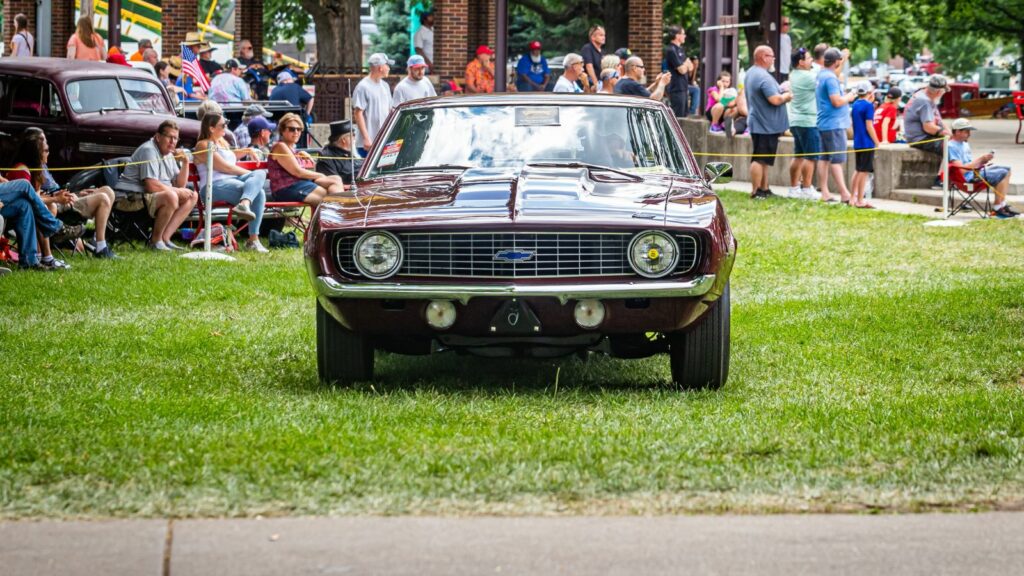Muscle cars were born in the 1960s and ’70s when seat belts were optional and gas was cheap. These beauties weren’t about practicality or fuel efficiency. They were about raw power and straight-line speed. Here are 21 old-school speedsters who have what it takes to leave modern machines choking on their exhaust fumes.
1970 Chevrolet Chevelle SS 454 LS6
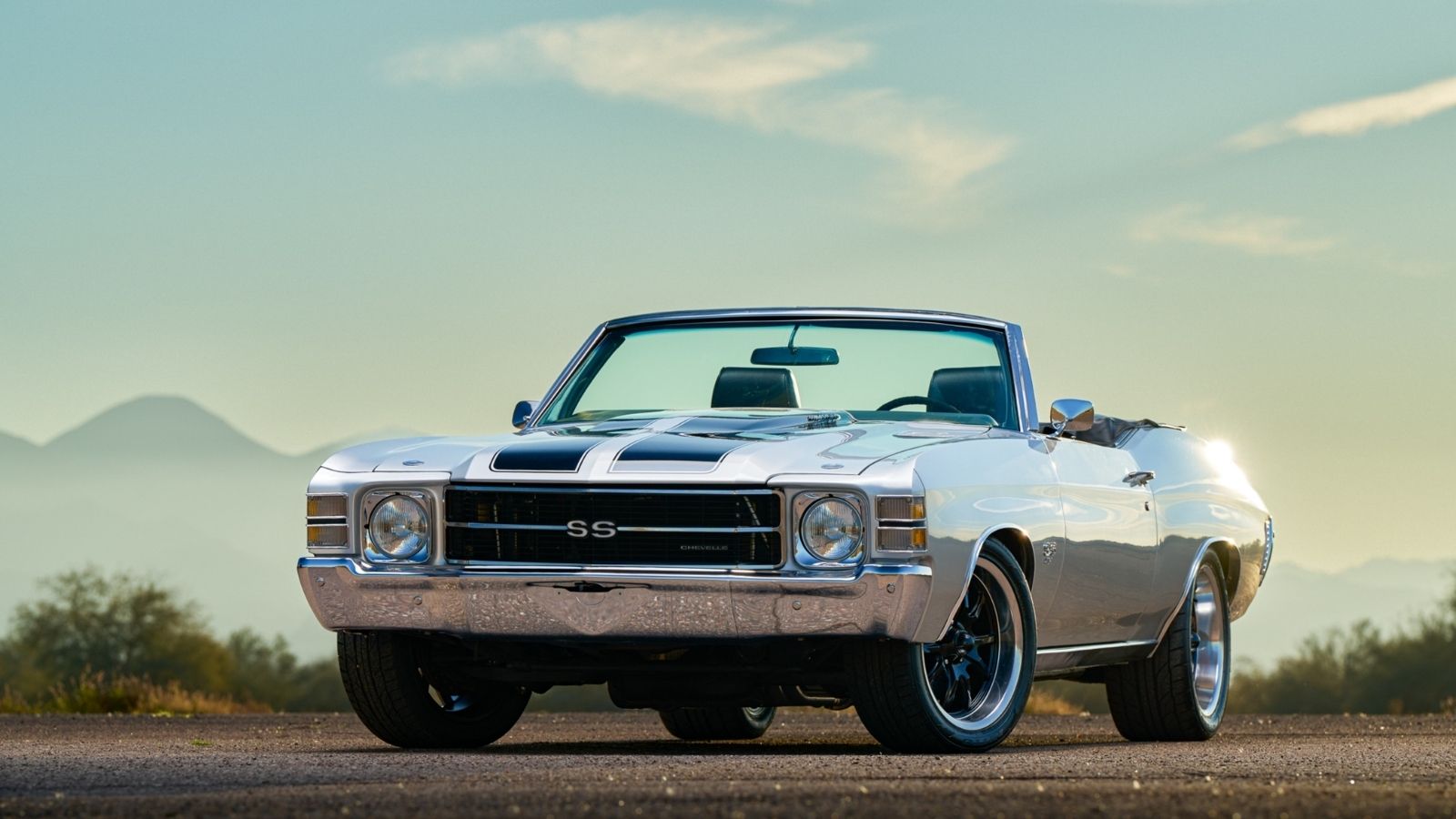
The Chevelle SS 454 LS6 was the apex predator of the muscle car jungle in its time. With a 7.4-liter V8 producing 450 horsepower and 500 lb.-ft of torque, this beast could rip through the quarter-mile in about 13.7 seconds. And no, those weren’t inflated Instagram numbers; that was a real-deal, street-shaking performance. Compare that to some modern sports cars struggling to break the 14-second barrier, and you’ll understand why the Chevelle still commands respect.
1969 Dodge Charger Daytona
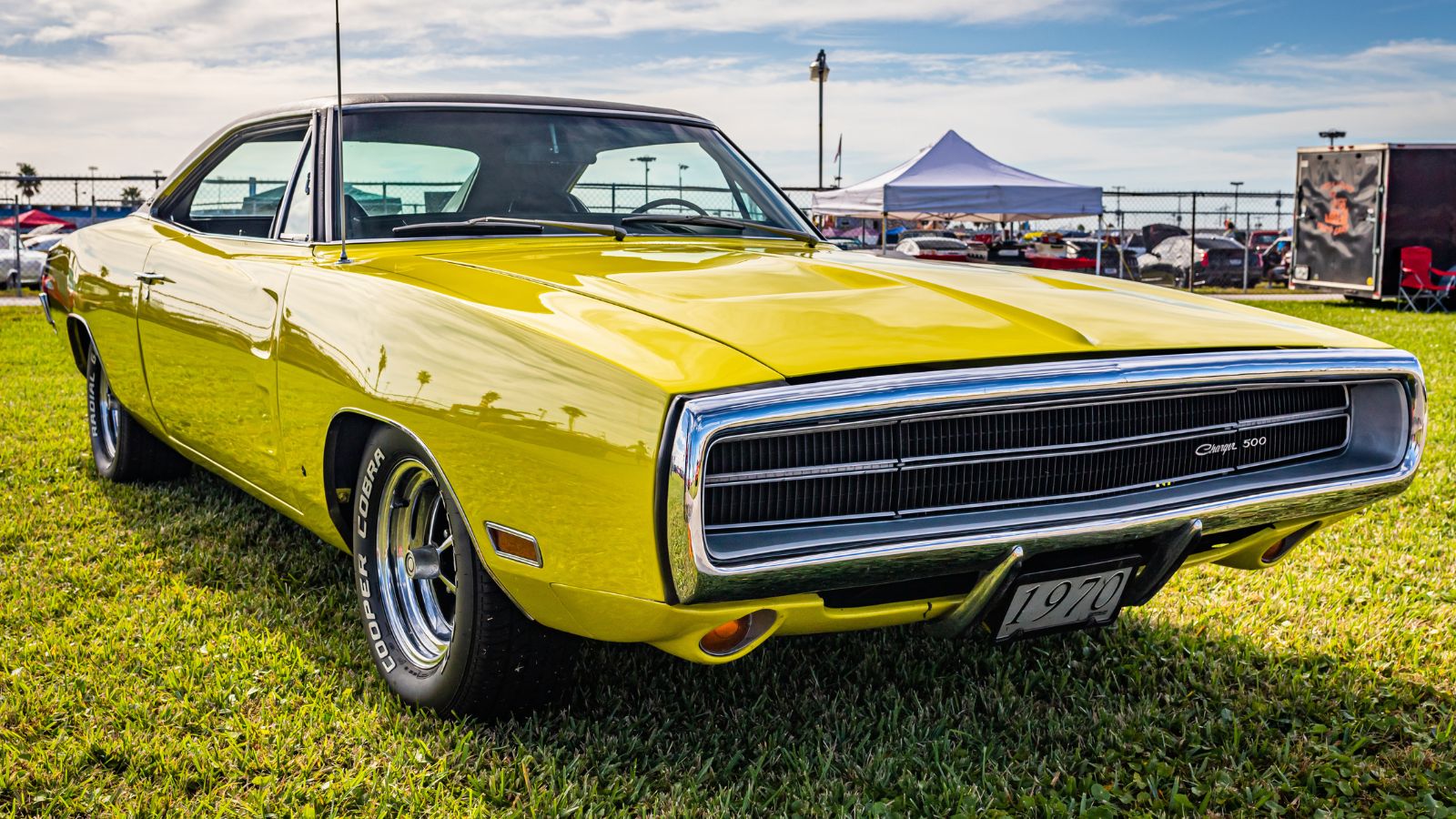
Ever wondered what happens when engineers go absolutely bonkers with aerodynamics? The Charger Daytona answered that question with a massive rear wing and a pointed nosecone. Beneath the hood, its 426 HEMI V8 made 425 horsepower. In 1969, it became the first car to break the 200-mph barrier in NASCAR. Yes, a 200-mph muscle car in the ’60s. And, while your neighbor’s 2024 EV might boast about a 0-60 time, it’ll never have the Daytona’s swagger.
1971 Plymouth HEMI ‘Cuda
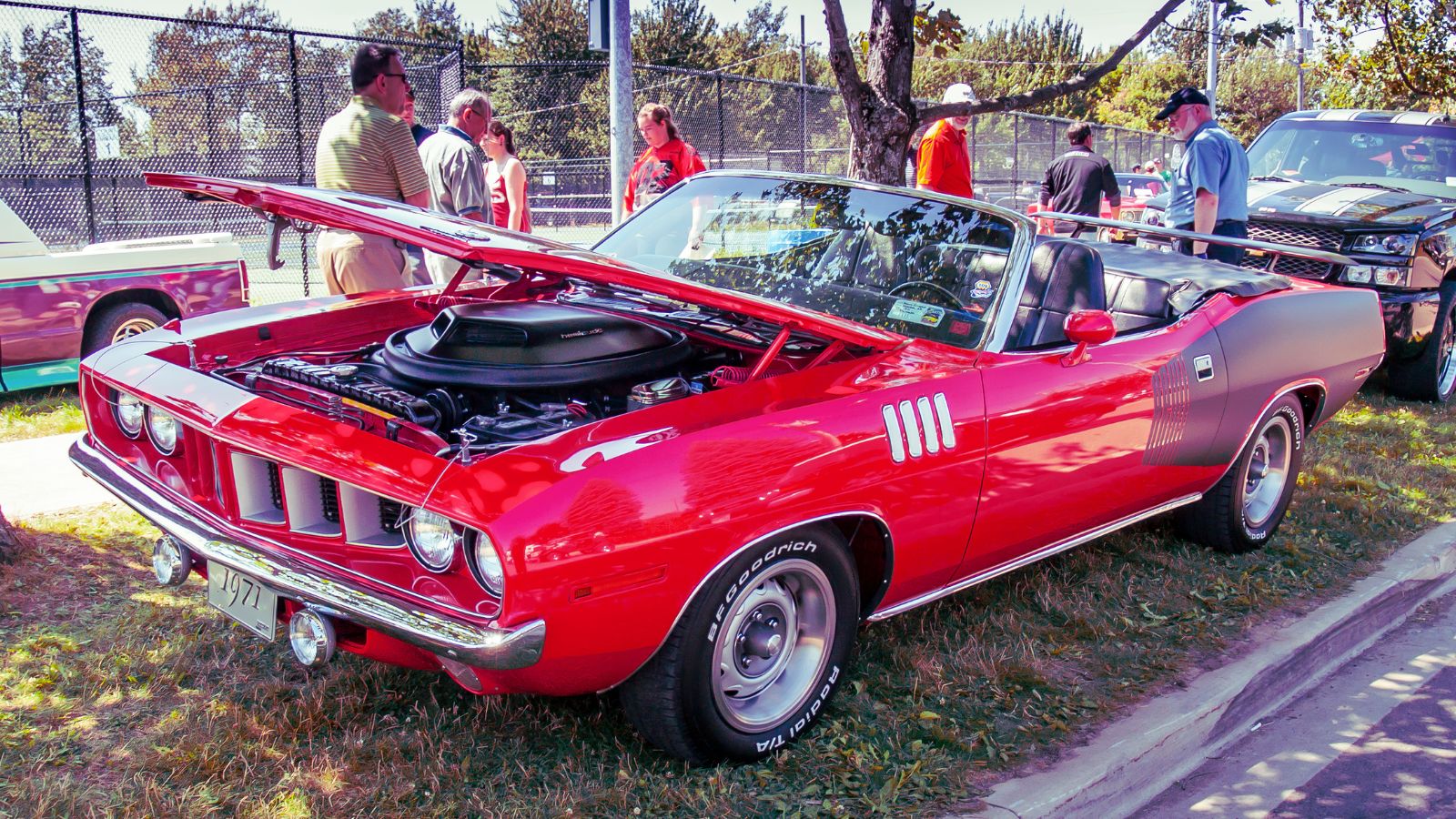
The Plymouth HEMI ‘Cuda was a sledgehammer disguised as a car. It came equipped with a 426 cubic-inch HEMI V8 engine, nicknamed the “Elephant” for its massive size and output—425 horsepower and 490 lb.-ft of torque. The engine also featured hemispherical combustion chambers, maximizing power and efficiency. Plus, the car was built on the E-Body platform, sharing DNA with the Dodge Challenger.
1967 Shelby GT500
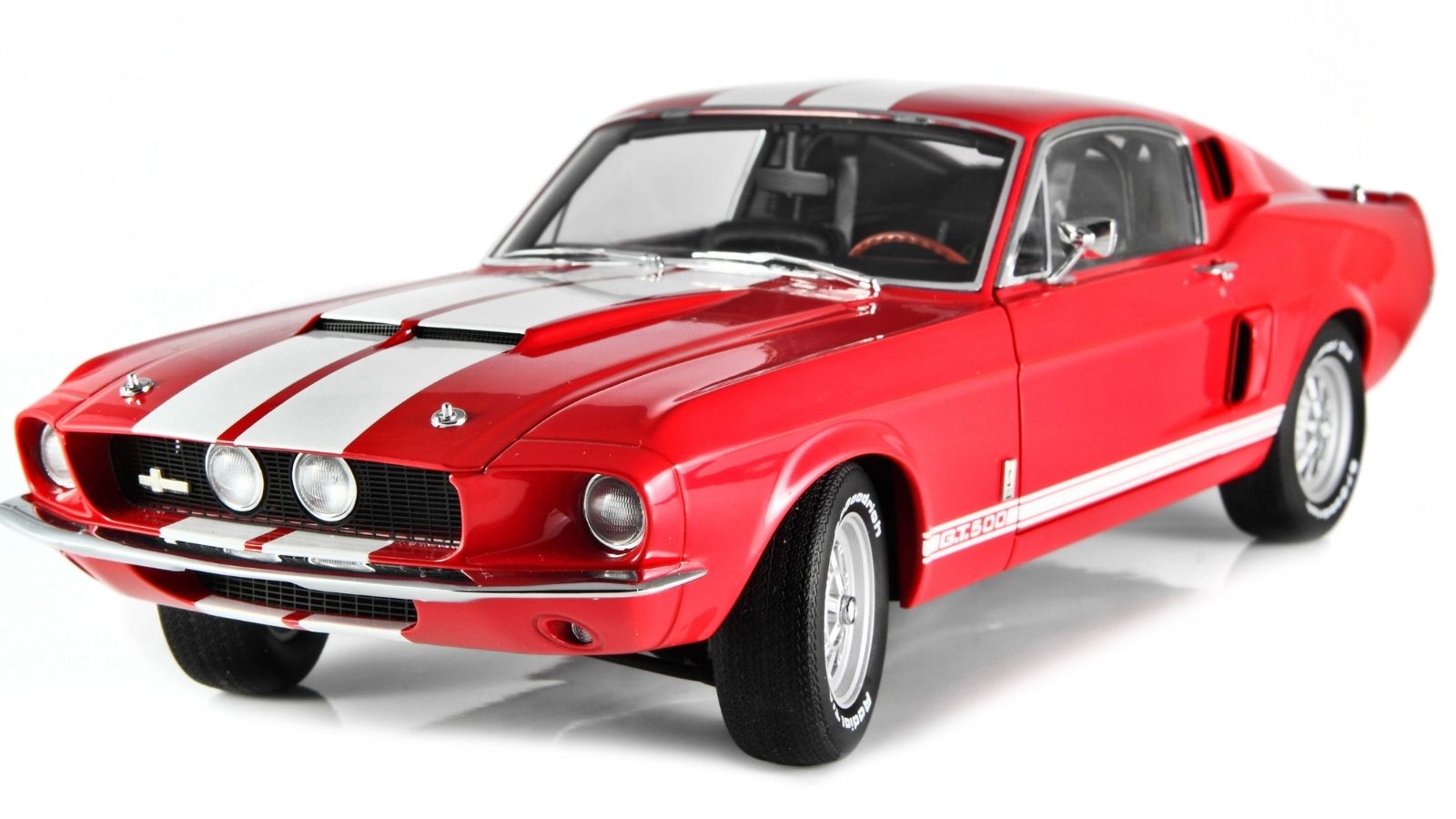
When Carroll Shelby decided to tweak the Ford Mustang, the result was the GT500, a machine that looked like it skipped leg day at the gym—because it was all muscle. Visually striking, it had fiberglass hood and trunk lids, scooped bodywork, and distinctive sequential taillights borrowed from the Mercury Cougar. Also, the GT500’s 4-speed manual or 3-speed automatic transmissions allowed thrilling control, while power steering and brakes made it manageable. Modern muscle cars might handle better, but they’ll never match the GT500’s sheer cool factor.
1970 Buick GSX Stage 1
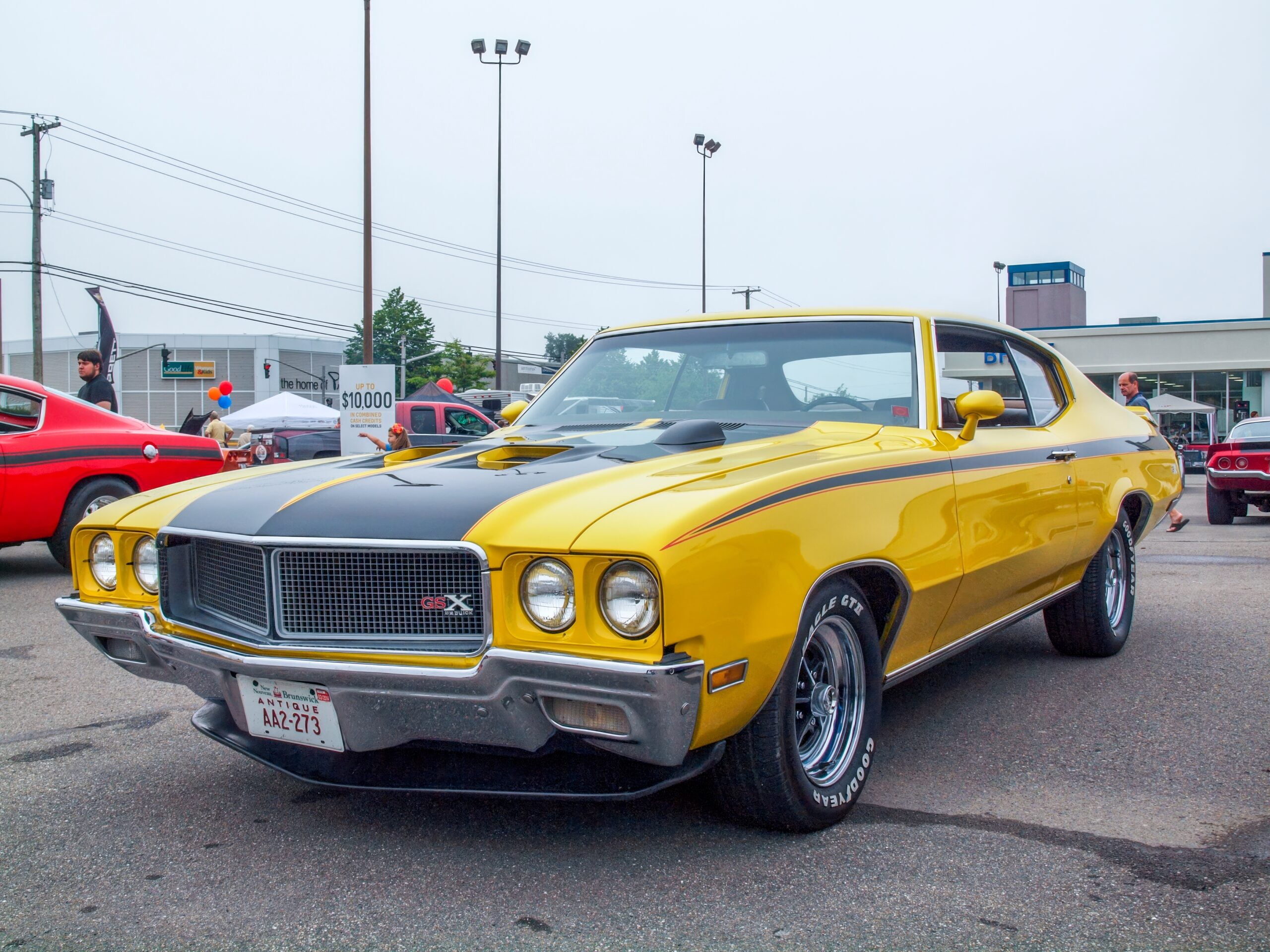
Don’t let Buick’s current reputation fool you—back in the day, they made some serious performance machines. The car was built on the Gran Sport (GS) platform and featured an aggressive design with bold racing stripes, a rear spoiler, and a blacked-out grille. Offered in two iconic colors—Apollo White and Saturn Yellow—it stood out in both looks and performance. Plus, it could rip through the quarter-mile in 13.4 seconds, a number that’ll leave many modern hot hatches feeling slow.
1969 Pontiac GTO “The Judge”
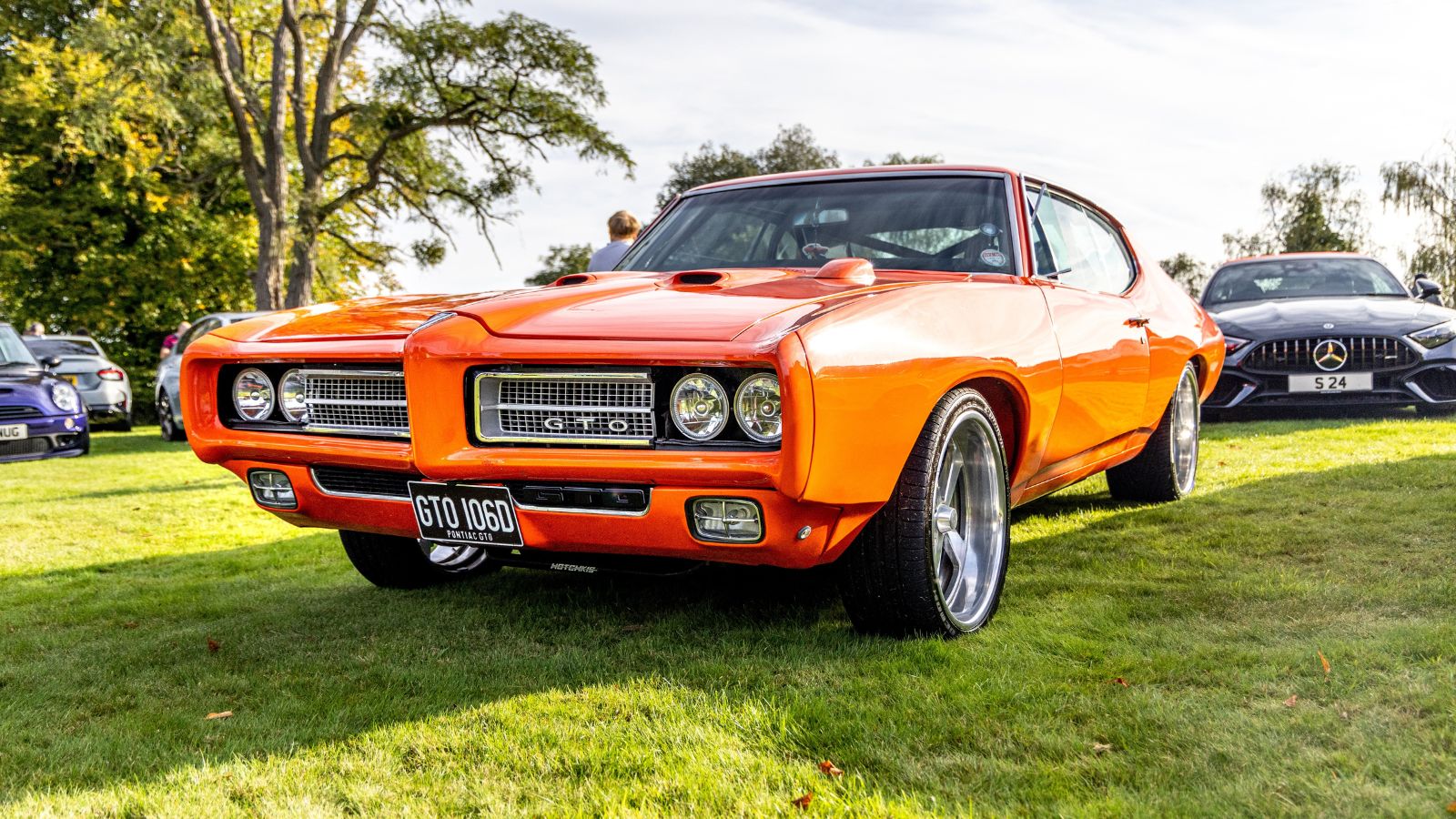
The GTO “The Judge” wasn’t just fast; it was a cultural icon. “The Judge” came standard with a 366-horsepower, 400 cubic-inch Ram Air III V8, while the ferocious 370-horsepower Ram Air IV was optional. Also, the Judge’s flamboyant stripes and bright orange paint screamed, “Look at me, I’m faster than your dad’s sedan!” It’s still a showstopper on and off the track. And, with only 6,725 units built in 1969, it remains a sought-after collector’s item and a symbol of Pontiac’s muscle car era.
1970 Oldsmobile 442 W-30
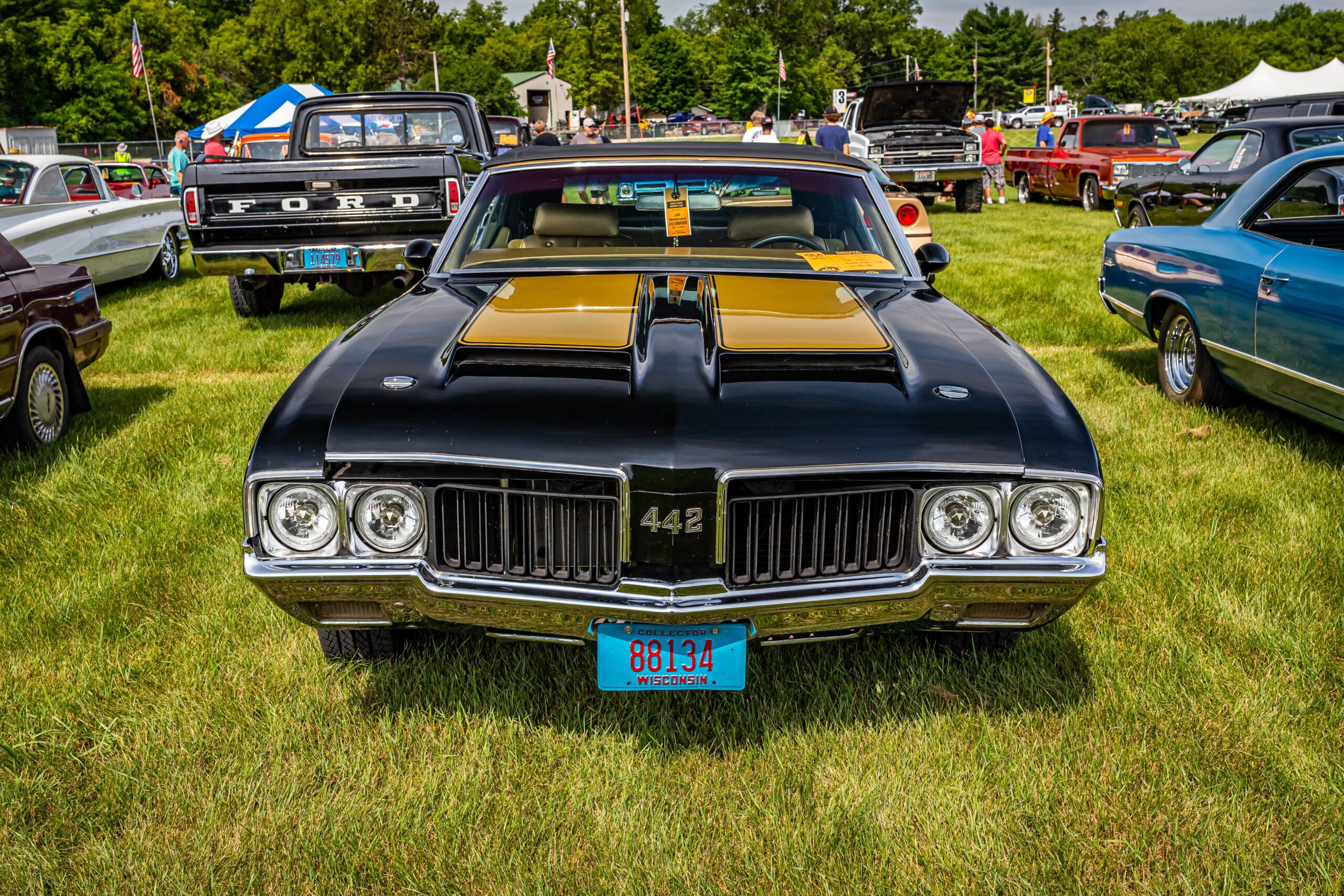
The 442 W-30 wasn’t just a muscle car but an Oldsmobile saying, “We’re not just here for Sunday drives.” The “442” stood for a 4-barrel carburetor, 4-speed manual transmission, and dual exhausts. It featured an aggressive front end with a split grille flanked by round quad headlights and a sculpted hood with functional air scoops that fed the powerful Ram Air induction system. Modern cars may have all-wheel drive, but they lack the soul of the 442 W-30.
1968 Dodge Charger R/T

The 1968 Dodge Charger R/T (Road/Track) is an icon of the muscle car era, blending sleek design with raw power. It debuted with a refreshed “Coke-bottle” body style featuring hidden headlights, a recessed grille, and a flying buttress roofline, setting a new standard for aggressive styling. Further, the R/T variant, Dodge’s performance flagship, came standard with a 440-cubic-inch Magnum V8 engine producing 375 horsepower.
1973 Pontiac Firebird Trans Am SD-455
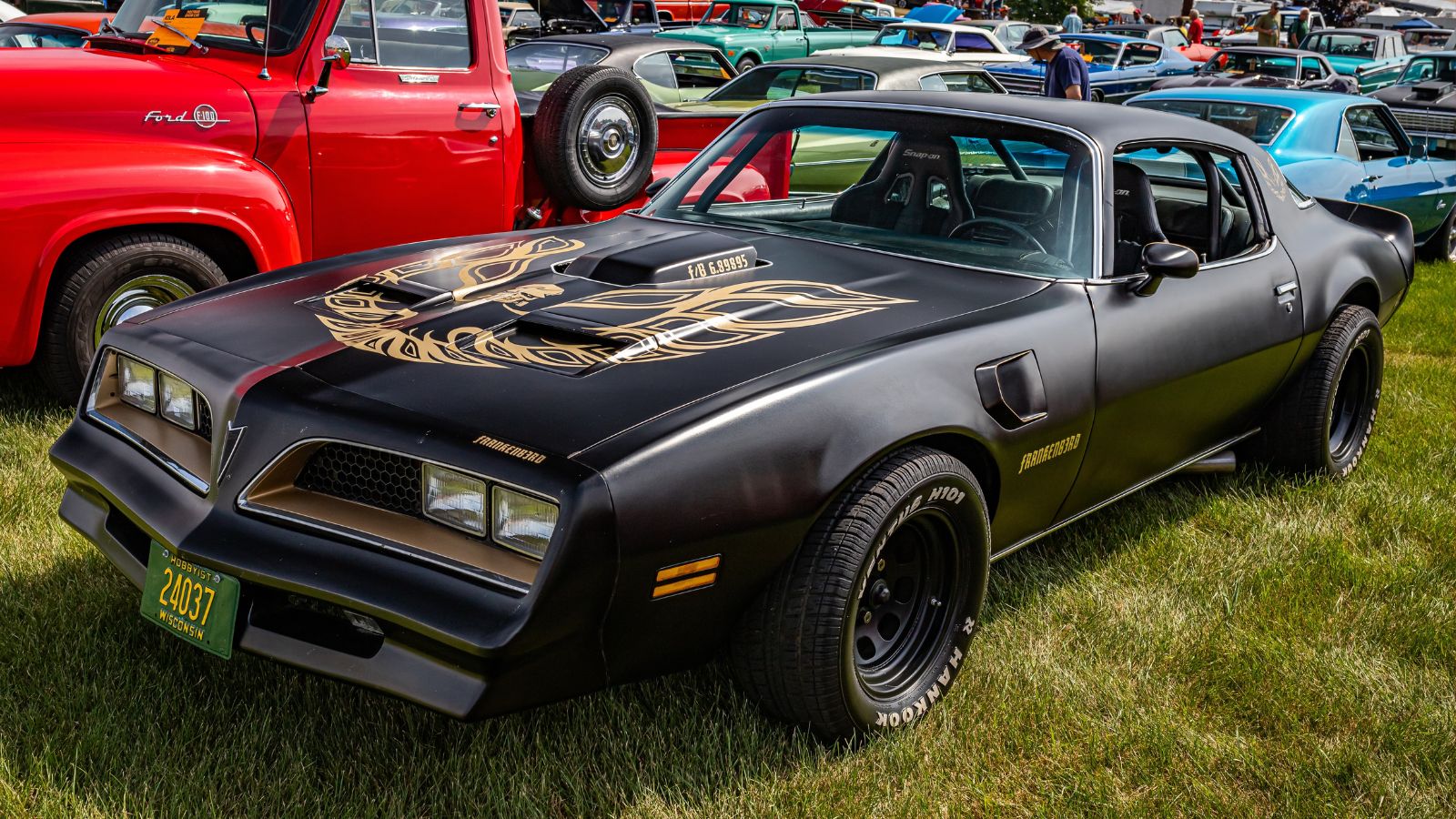
The Trans Am SD-455 was one of the last hurrahs of the true muscle car era. Its crown jewel was the Super Duty 455 (SD-455) engine, a 7.5-liter V8 rated at 310 horsepower and a monstrous 390 lb.-ft of torque, though unofficial estimates suggest closer to 370 hp. This engine featured reinforced block construction, high-flow cylinder heads, forged internals, and a performance-tuned Quadrajet carburetor. Plus, it had a giant screaming chicken decal on the hood. What’s cooler than that?
1970 Dodge Challenger R/T
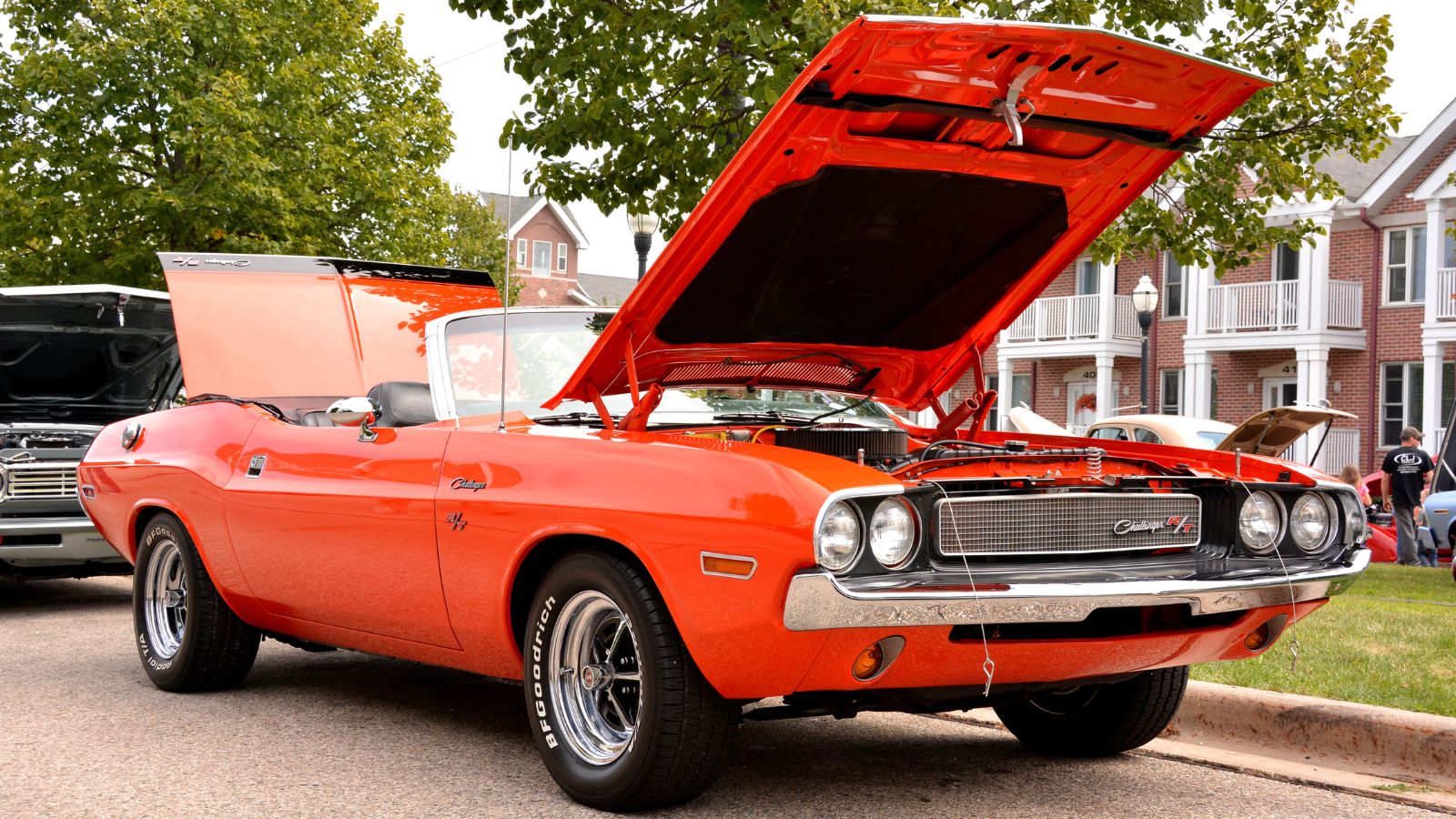
The Dodge Challenger R/T was a rebel in a world full of conformists. Its transmission options included a 3-speed manual, 4-speed manual, or TorqueFlite automatic. The Challenger R/T also offered a “Shaker” hood scoop and high-impact paint colors like Plum Crazy and HEMI Orange. Inside, it boasted a driver-focused cockpit with optional high-back bucket seats. Praising for its performance and style, the 1970 Challenger R/T remains a collector’s dream and a symbol of the muscle car era.
1969 Ford Mustang Boss 429
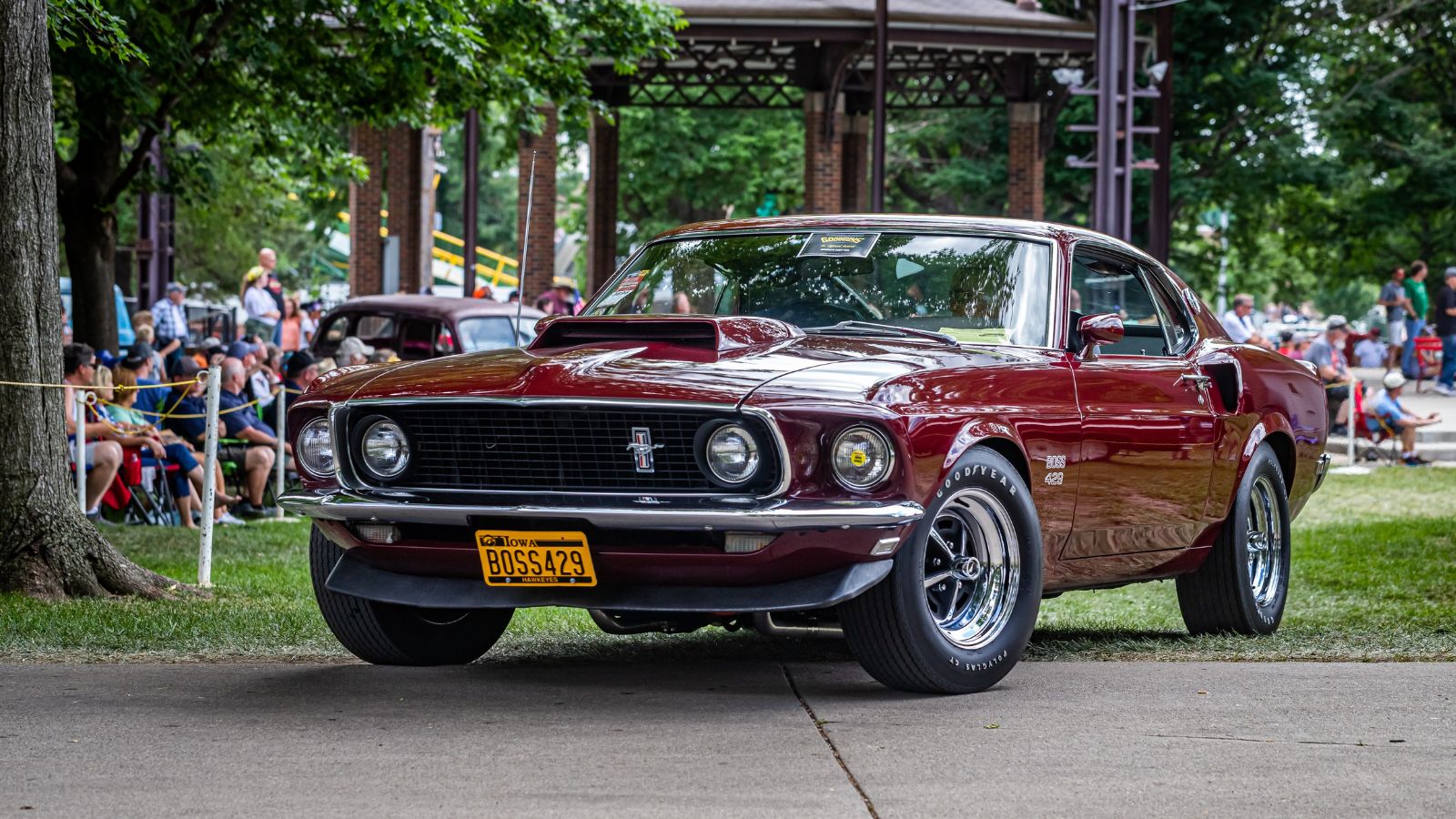
The Boss 429 wasn’t just a Mustang but a thoroughbred race car in street clothes. Only 859 units were produced, making it incredibly rare and highly sought after today. The standout feature was its massive 429-cubic-inch (7.0L) V8 engine, initially developed for racing by Ford to meet homologation requirements. This engine churned out around 375 horsepower and 450 lb.-ft of torque, propelling the Mustang from 0 to 60 mph in about 6.4 seconds. Overall, the car makes modern Mustangs look like they’re trying too hard.
1965 Pontiac GTO

The Pontiac GTO is often credited as the car that started the muscle car craze. A “no-frills” option? Hardly. The GTO had bucket seats, a Hurst shifter, and enough chrome to blind onlookers. Plus, the stacked headlights gave it a glare that said, “Move over.” Starting at $2,800 (yeah, let that sink in), it was affordable mischief for anyone craving speed. And, fun fact: GTO stood for “Gran Turismo Omologato,” which Pontiac borrowed from Ferrari. Because who needs subtlety when you have 360 horses under the hood?
1971 Dodge Demon 340
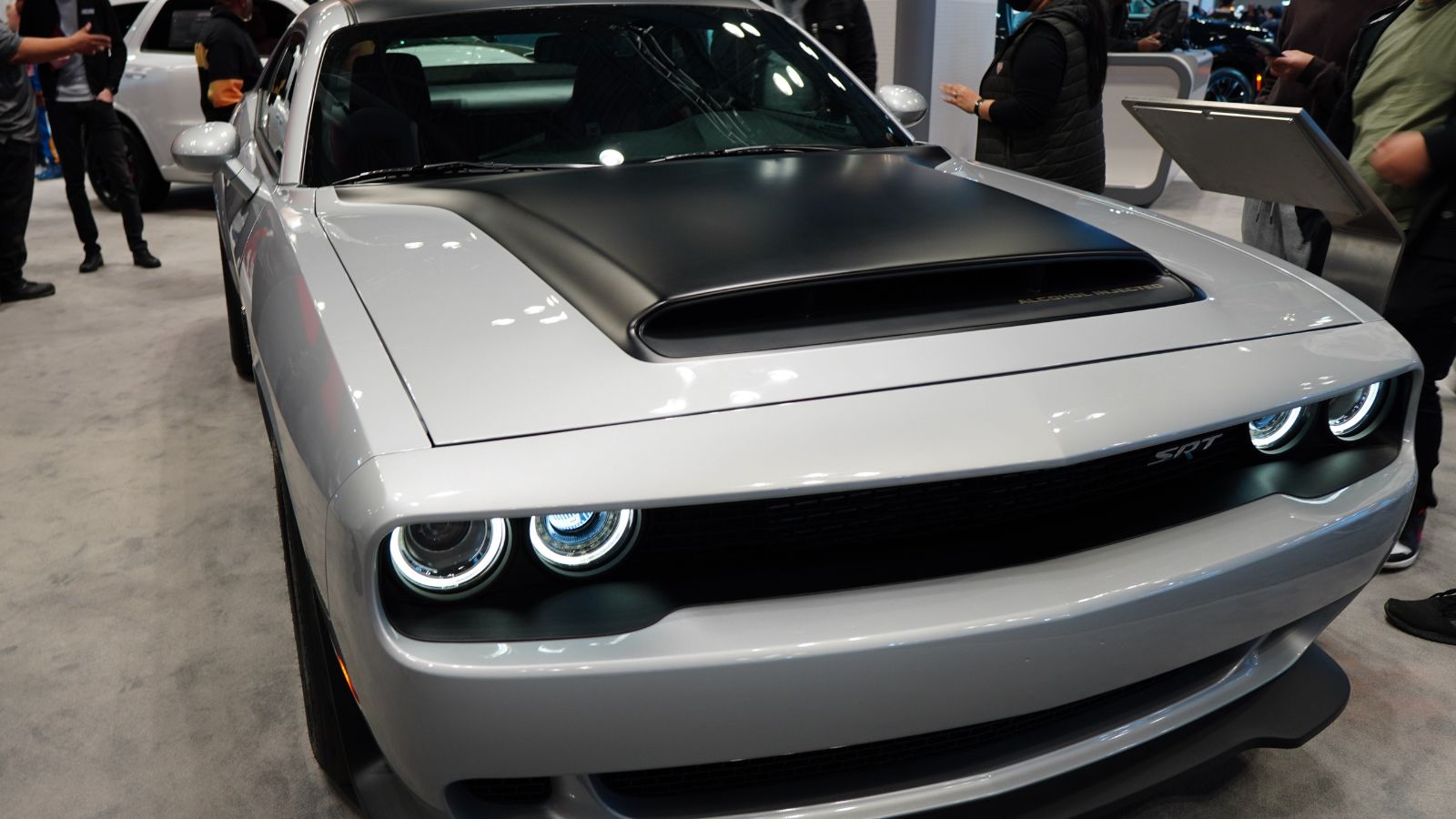
The 1971 Dodge Demon 340 was Chrysler’s way of saying, “Let’s take a little car and stuff it full of muscle.” Built on the Dodge Dart platform, this firecracker came with a 340-cubic-inch V8 engine producing a hearty 275 horsepower—enough to make it growl louder than your neighbor’s lawnmower on a Saturday morning. It weighed just over 3,000 pounds, so it could rocket from 0 to 60 in about 6 seconds, leaving Camaros and Mustangs scratching their heads.
1967 Chevrolet Camaro Z/28
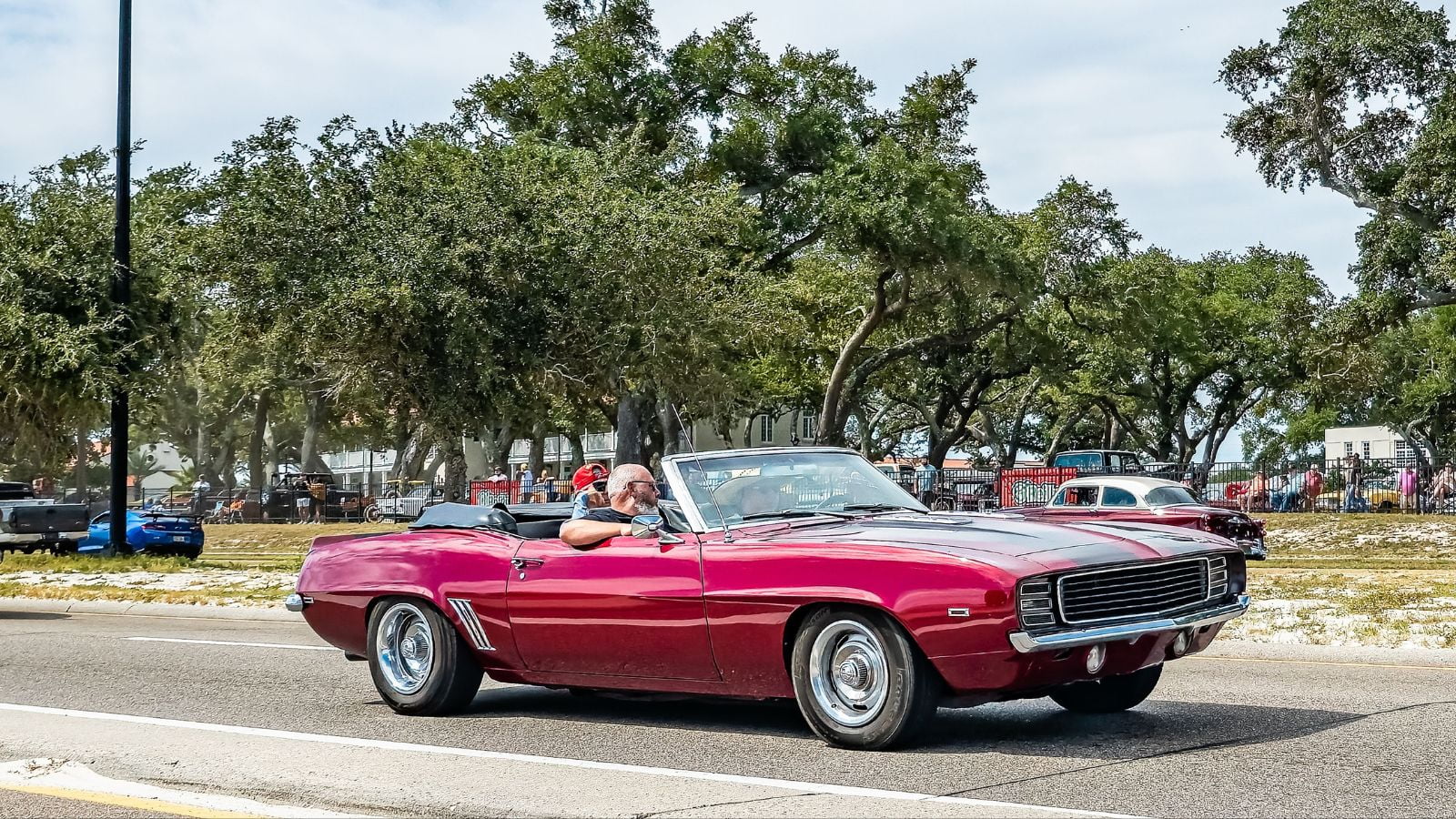
The Z/28 was Chevrolet’s answer to the Ford Mustang’s dominance, and boy, did it deliver. With a high-revving 302 V8 designed for Trans-Am racing, the Z/28 was a track monster. Only 602 were built, making it rarer than a unicorn wearing sunglasses. It skipped the big-block mania for lightweight corner-hugging agility. With power disc brakes, stiffer suspension, and iconic stripes, it was the first Camaro to flex a Z/28 badge. Today? It’s a legend, fetching big bucks at auctions.
1970 Plymouth Road Runner
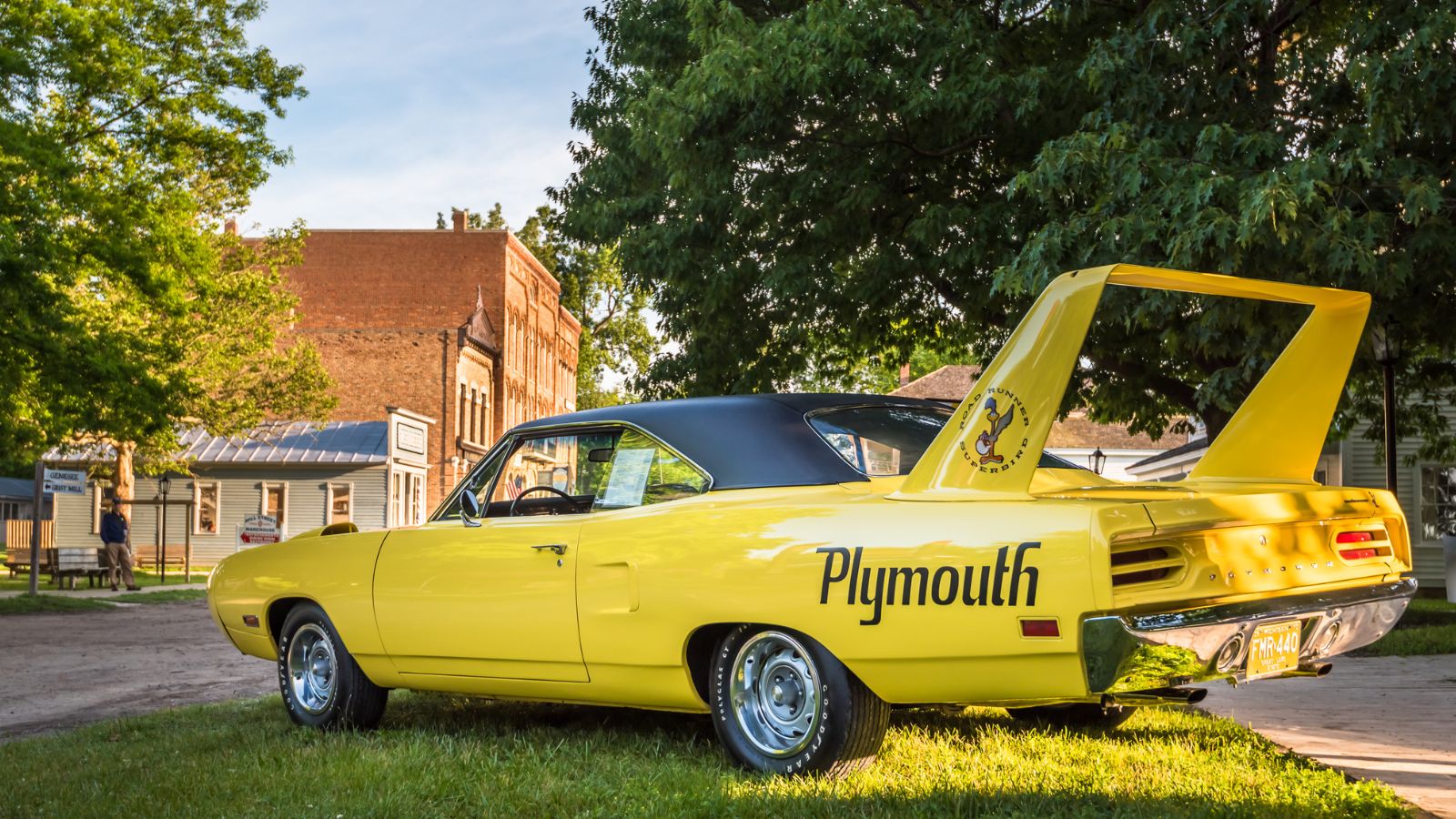
The Plymouth Road Runner was a muscle car that didn’t take itself too seriously. With its signature cartoon bird decals and a horn mimicking the Road Runner’s “meep meep” (yes, that’s true!), it was all about swagger. The Air Grabber hood scoop, which looked like a shark’s mouth, could be opened for better engine airflow—or to scare the Camaro guy next to you. Practical? Nope. Cool? Absolutely.
1971 AMC Javelin AMX
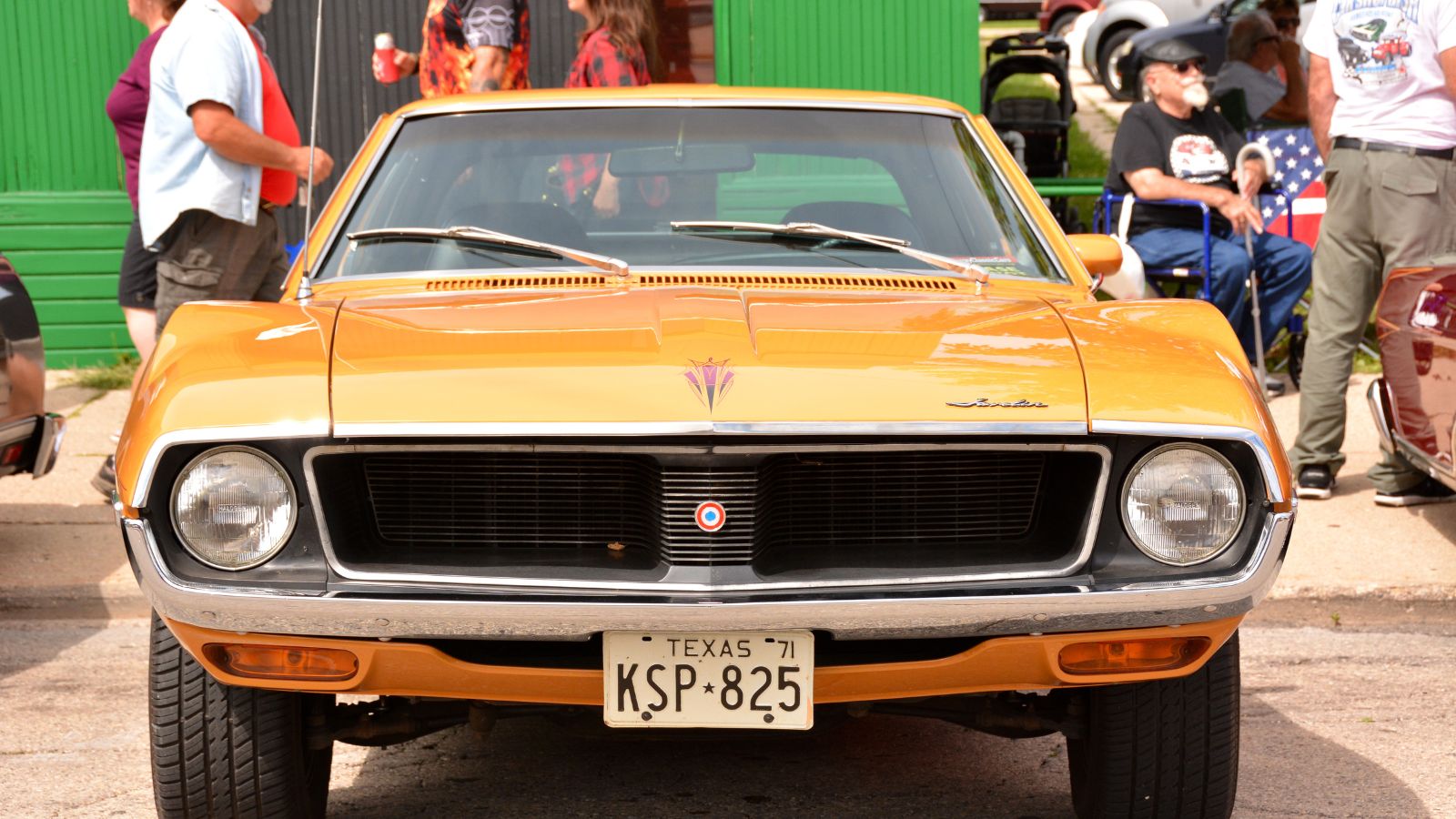
The 1971 AMC Javelin AMX was AMC’s way of saying, “Hey, we can do muscle cars too, and make them look like they mean business!” This beauty came with a choice of engines, but the top dog was the 401-cubic-inch V8, producing a hefty 330 horsepower. That’s enough grunt to turn tires into smoke and neighbors into complainers. It also featured an elongated hood, an aggressive stance, and that signature “hump” in the roofline that gave it a quirky, unique look.
1964 Ford Fairlane Thunderbolt
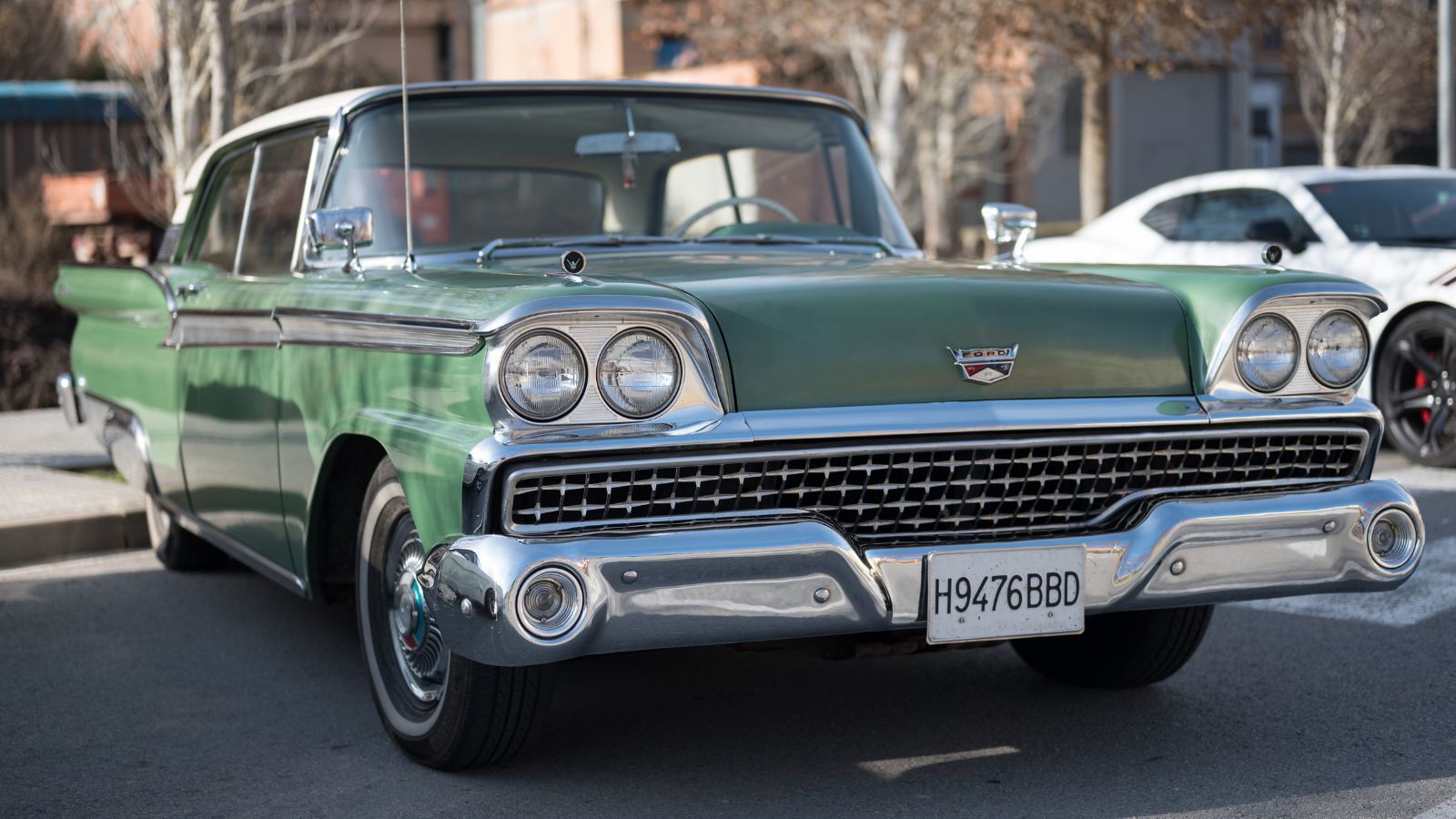
The Thunderbolt was a drag car with license plates. Only 100 were built for NHRA Super Stock competition, and Ford wasn’t playing fair—because this Fairlane was lightning-fast, clocking quarter-mile times in the mid-11s at over 120 mph. It wasn’t practical for grocery runs unless your groceries consisted solely of trophies. Plus, these cars came stripped-down, including heater delete, because who needs warmth when you’ve got speed? Today, a Thunderbolt is a collector’s holy grail, often fetching six-figure prices.
1969 Mercury Cougar Eliminator
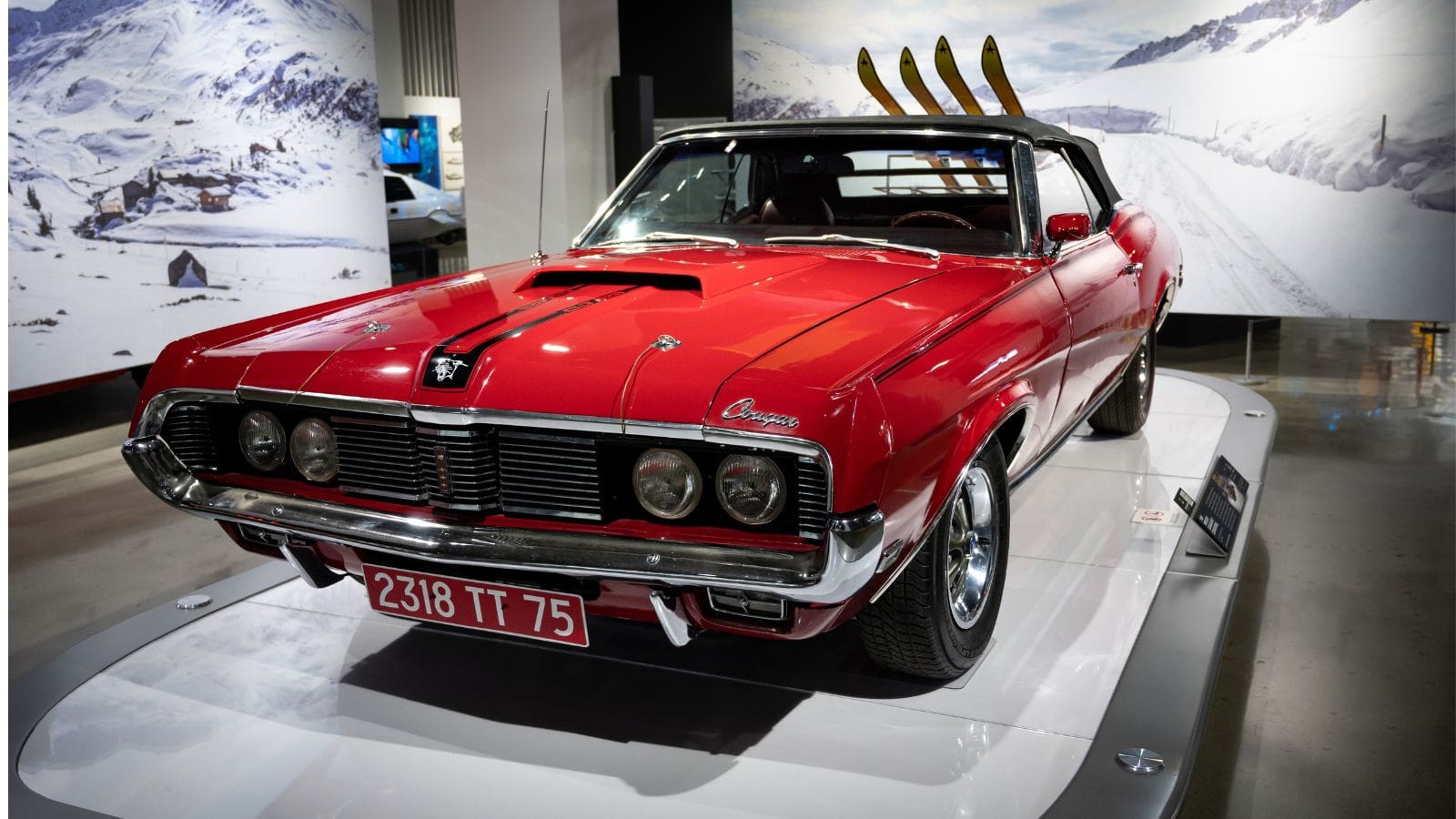
The Cougar Eliminator was Mercury’s muscle car with a touch of class. This top-tier Cougar trim roared onto the scene with a bold attitude, flashy colors like Competition Orange, and enough horsepower to scare the neighbors. Under the hood, buyers could opt for engines ranging from a 351 Windsor V8 to the beastly 428 Cobra Jet, delivering up to 335 hp—or more if you knew how to sweet-talk your mechanic.
1970 Chevrolet Nova SS 396
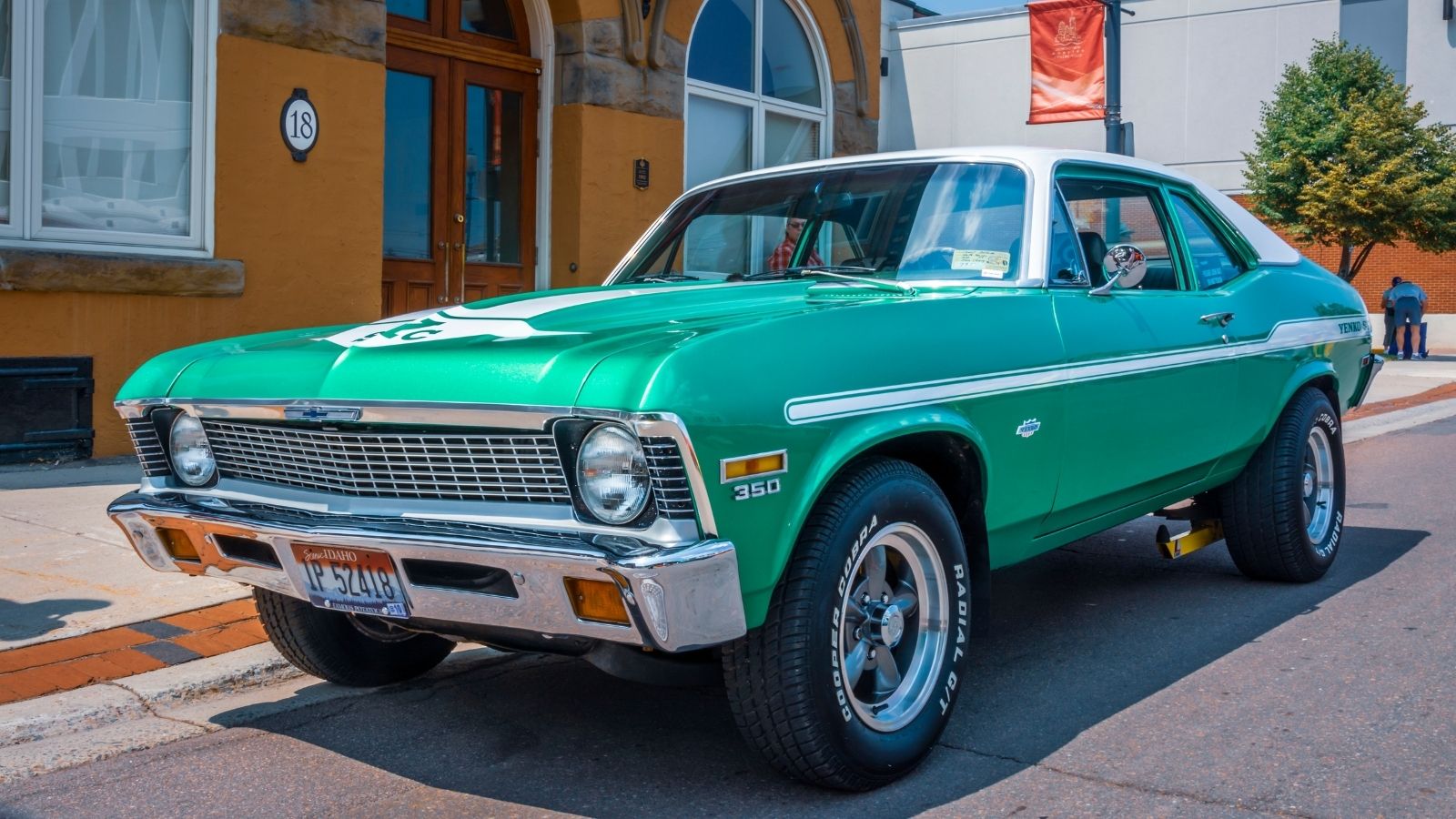
The Nova SS 396 was proof that big things come in small packages. Available with a 4-speed manual transmission, it could shred tires faster than a kid opening Christmas presents. It featured heavy-duty suspension and power front disc brakes because stopping a muscle car in the ’70s wasn’t optional; it was survival. Also, its subtle badging and a blacked-out grille screamed, “I’m fast, but I won’t brag about it.” This was a muscle car for those who liked their power wrapped in a plain brown paper bag. Want proof? Car and Driver clocked 0-60 mph in just 6.0 seconds.
1968 Plymouth GTX
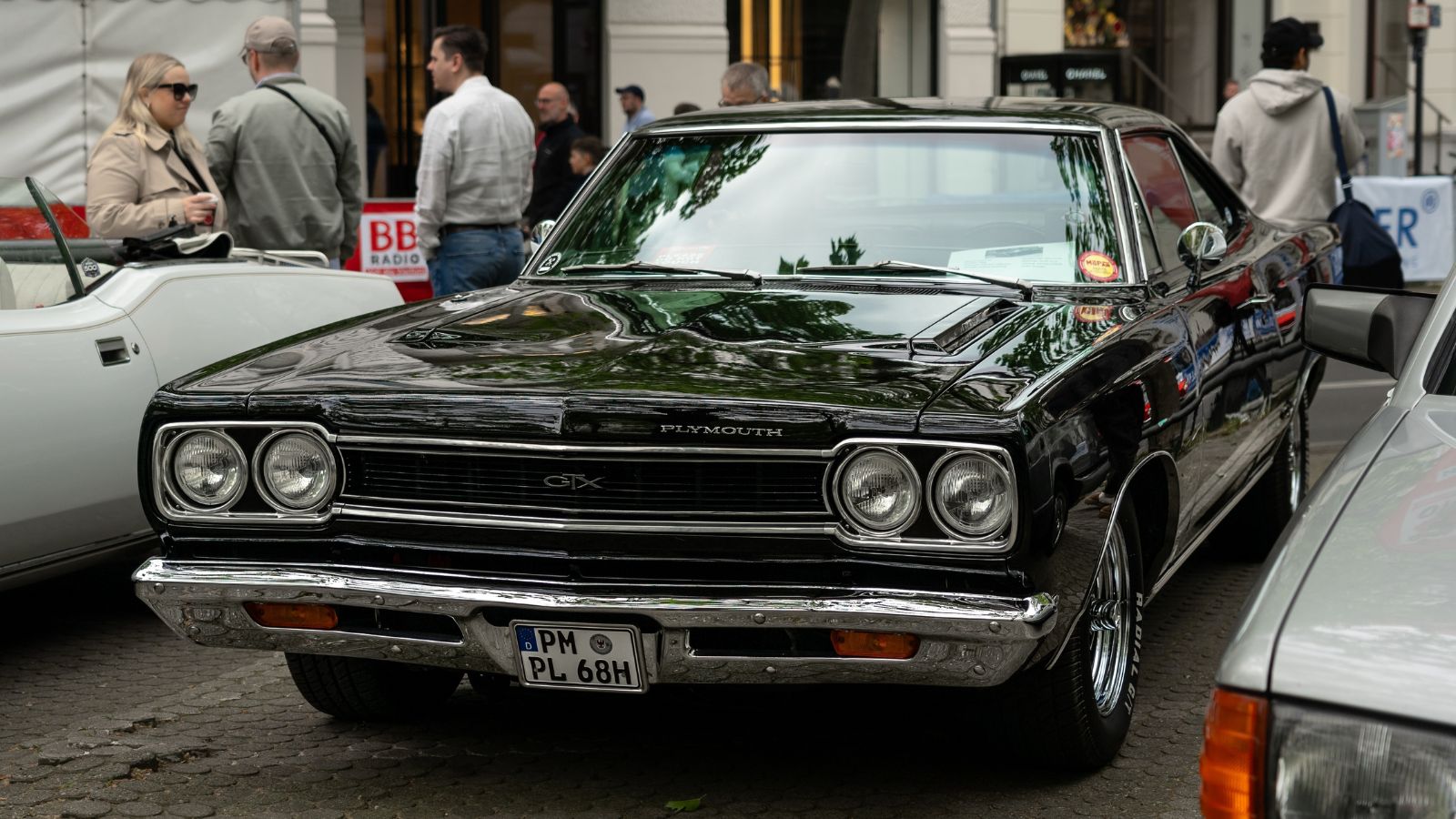
The GTX was Plymouth’s “gentleman’s muscle car,” combining luxury with brutal performance. It shared its DNA with the Plymouth Belvedere but flaunted unique trim and features to set itself apart. Power? Oh, it had plenty! Under the hood roared the standard 440-cubic-inch “Super Commando” V8, delivering a neck-snapping 375 horsepower. Want more chaos? The optional 426 HEMI engine, with its 425 horses, could turn tires into smoke faster than you could say “quarter-mile.” It was as fast as it was refined—a rare combination in the muscle car world.
1971 Chevrolet Corvette ZR2
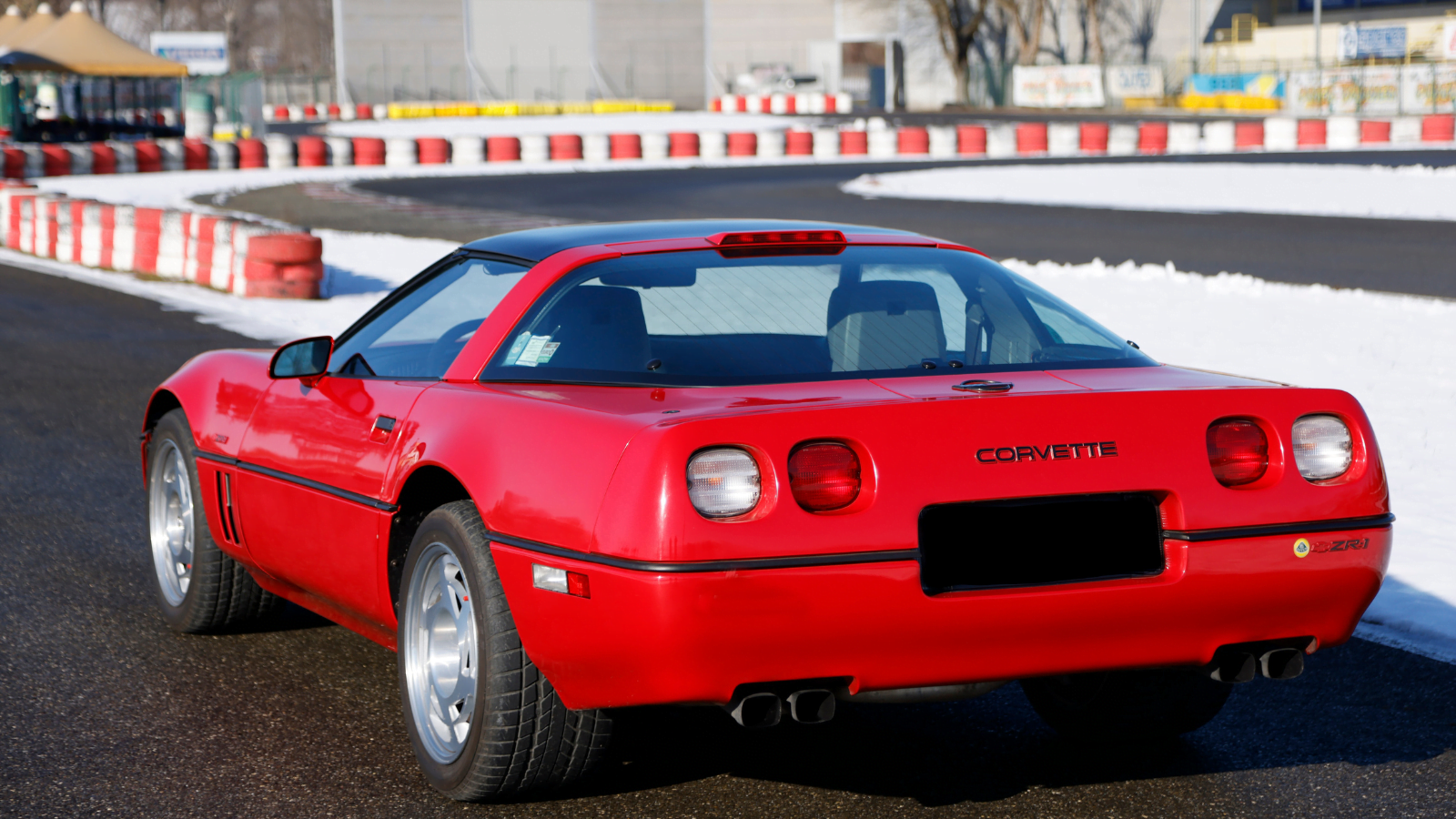
The ZR2 was a rare beast, with only 12 ever made. Under the hood, it packed the beastly LS6 454ci V8 engine, belting out a thunderous 425 horsepower. Also designed primarily for speed junkies, the ZR2 came with heavy-duty suspension, bigger brakes, and an aluminum radiator to handle all that fiery power. It was a race car in street-legal clothing. With a price tag of $10,720 in 1971 (ouch!), it wasn’t cheap, but today it’s a collector’s dream, often fetching millions. In short, the ZR2 was the “rock star in a tuxedo” of Corvettes.
25 Facts About Car Loans That Most Drivers Don’t Realize

Car loans are one of the most common ways people fund car purchases. Like any other kind of loan, car loans can have certain features that can be regarded as an advantage or a disadvantage to the borrower. Understanding all essential facts about car loans and how they work to ensure that you get the best deal for your financial situation is essential. Here are 25 shocking facts about car loans that most drivers don’t realize:
25 Facts About Car Loans That Most Drivers Don’t Realize
